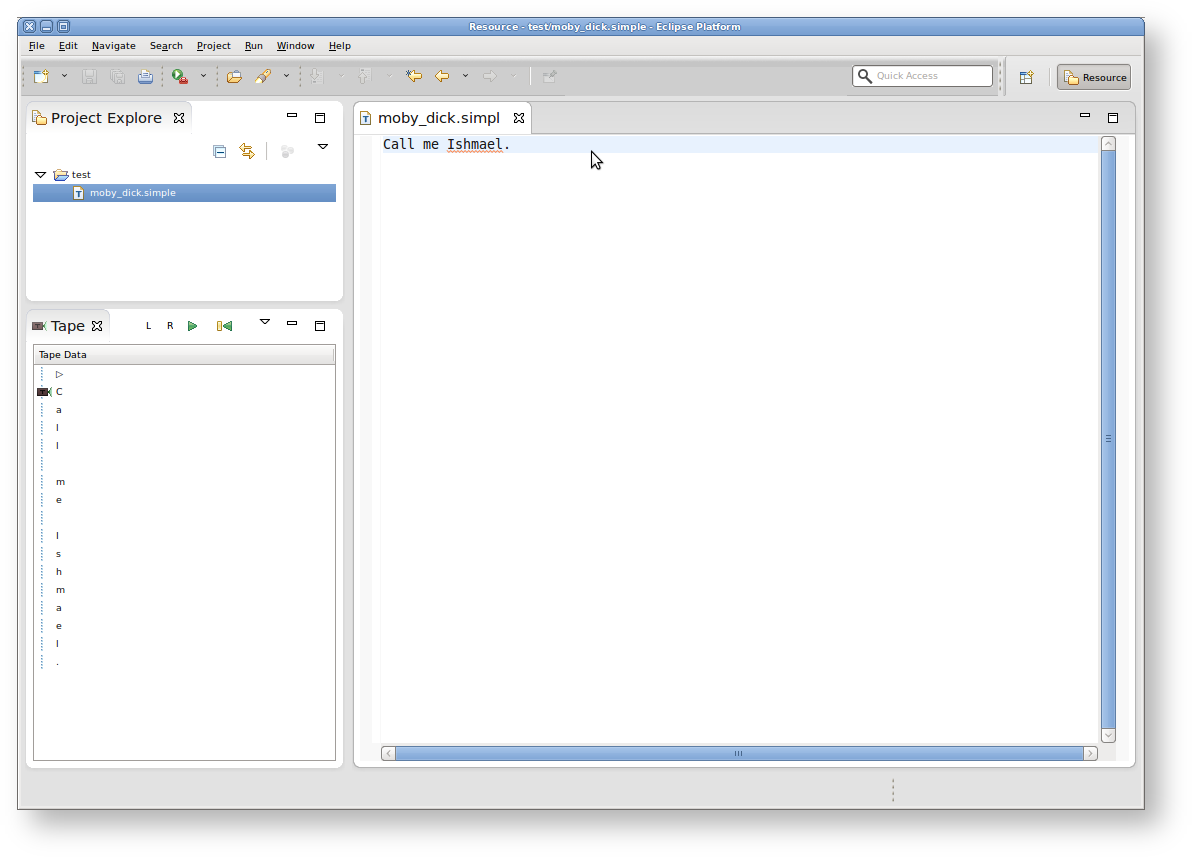| Warning | ||
|---|---|---|
| ||
This tutorial isn't complete yet! |
This tutorial will teach you the basics of writing plugins that run inside the Eclipse framework. You will learn about editors, views, and extension points by creating one of each yourself. Once you're done with this tutorial, you will have an application that will look something like this:
You may want to download the slides of the presentation explaining the basic concepts you will explore in this tutorial.
| Table of Contents |
|---|
Preliminaries
...
- Create a new plug-in
de.cau.cs.rtprak.login.simple.extension. (Remember to create the project in your Git repository.) In the Plugin Manifest Editor, addde.cau.cs.rtprak.login.simpleto the dependencies of the new plug-in. - Create a new class that implements
IHeadController:- Assuming that the initial head position is 1, the controller shall copy the input text infinitely often. So if the tape initially contains the word
hello, the controller shall generatehellohellohellohe.... - Your class needs some private fields to store the internal state of the controller, and you may need some special character as marker. Imagine how a Turing Machine would do this.
- It is not allowed to store data that can grow infinitely, since a Turing Machine may only have a finite number of states. This means that you may store single characters or numbers, but you must not store Strings, StringBuffers, arrays, lists, or sets.
- Assuming that the initial head position is 1, the controller shall copy the input text infinitely often. So if the tape initially contains the word
- Register the new controller class using an extension in the new plug-in.
- Test your controller.
...
